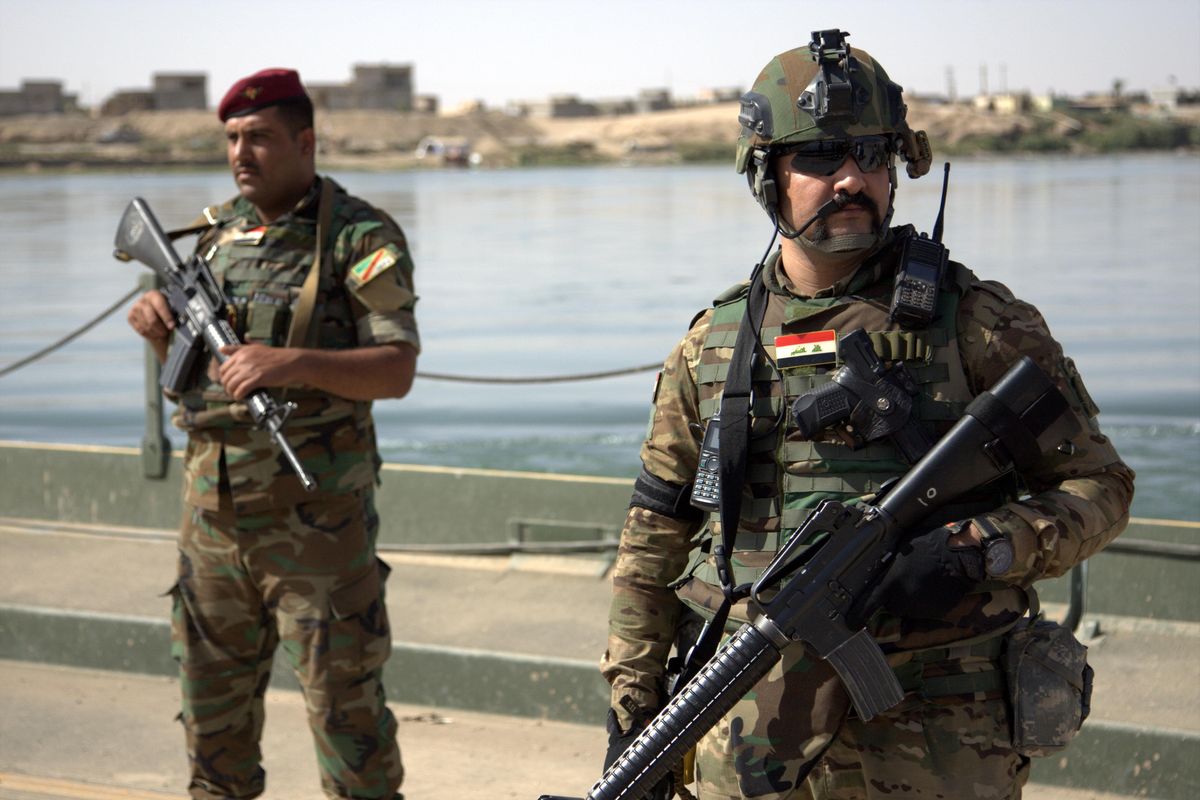How U.S. and Western troops will help in the battle for Mosul

On Monday, Iraqi military and police forces, alongside Kurdish fighters and various militias, began their slog into the Islamic State’s last Iraqi stronghold of Mosul.
Since the official start of the U.S.-led campaign against the Islamic State in Iraq and Syria in 2014, U.S. military officials have stressed that American troops would not be in a combat role, and instead relegated to “advising and assisting” their Iraqi counterparts from behind the front lines. Coupled with air and artillery support, the strategy has paid off, albeit more slowly than some military campaigns in the past.
In Mosul, that strategy will be put to the test as U.S. and Western forces are forced to coordinate their support, comprising chiefly of airstrikes, with 80,000 troops advancing from different directions, all on their own timetables, some with differing uniforms and likely no universal way to communicate.
Unlike other battles against the Islamic State, the sheer number of fighters pouring into Mosul is staggering compared to prior operations. The fight for Ramadi earlier this year featured roughly 10,000 Iraqi troops, while the battle for Fallujah, just months later, had around 15,000.
According to Lt. Gen. Stephen Townsend, commander of the U.S.-led campaign in Iraq and Syria, the advancing forces will be buoyed by Western air support, artillery, intelligence, advisers and troops that will help call in airstrikes, known as forward air controllers. But what exactly does that look like?
Air Support
The United States and its coalition partners have thrown everything but the kitchen sink at the Islamic State, from F-22 fighters to hulking Cold War-era B-52 bombers. Aside from jets, the U.S. military also has Apache helicopter gunships and a cadre of reconnaissance aircraft, including unmanned and heavily armed drones. Coordinating the airspace over Mosul will be increasingly difficult, especially if the different lines of advance into the city are attacked by the Islamic State at the same time. This is likely where some of the troops trained to call in airstrikes Townsend mentioned will come into play, as they will be forced to talk to one another on the ground to make sure the right aircraft are going to the right place. Requests by Iraqi troops for Western air support are usually relayed to an Iraqi liaison at a joint command center in Baghdad. From there, the Americans would route the appropriate aircraft overhead. In Mosul, U.S. forces might try and cut down that process by embedding those troops trained to call in airstrikes at a much lower level.
Artillery
Artillery, including howitzers and guided rockets known as HIMARS have been integral in earlier operations against the Islamic State. U.S. artillery detachments supporting the Mosul campaign are located in Makhmour, to the southeast, and Qayyarah Airfield directly to the south. In the past, U.S. forces have airlifted some of their howitzers in to certain locations to support specific operations. This is likely either because the targets for the operations were out of range or the artillery pieces had to be relocated so the flight path of their projectiles would be in line with advancing friendly troops. It is unclear if U.S. troops have moved any of their artillery in such a manner for the Mosul operation. France is also reported to have artillery pieces northeast of the city.
Advisers
Advisers is the Pentagon’s preferred term for every type of U.S. military personnel in Iraq and Syria that isn’t a pilot. In reality, advisers run the gamut between Special Operations forces such Army Green Berets, to National Guard soldiers teaching an Iraqi unit how to build a bridge. For Mosul, U.S. and Western advisers will likely advance in tandem with whatever Iraqi unit they are paired with. Conventional American forces, for the Mosul battle, are allowed to go advise at the battalion level. This means, for example, that U.S. advisers are still relegated to staying behind the lines, but if an Iraqi unit’s battalion commander wants to fight from the front, his American counterparts will likely go with him. Western Special Operations forces, on the other hand, will move about the front much more freely. Green Berets or Navy SEALs operating alongside units that don’t have such a clear-cut command structure – such as the Peshmerga – will probably move much closer to the front than their conventional counterparts. International coalition partners with advisers on the ground, on the other hand, might not have any restrictions on where they are allowed to operate. The advisers, regardless of their location, will help make sense of parts of the battle that might be difficult to discern from the trenches.